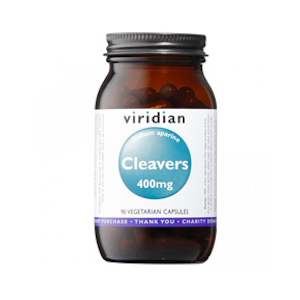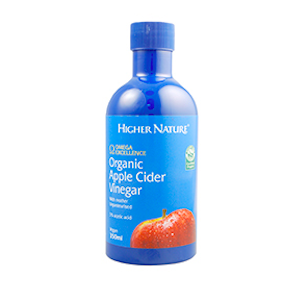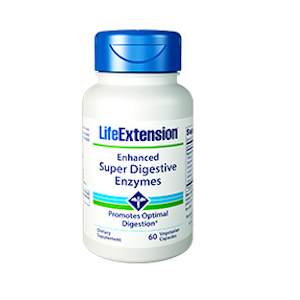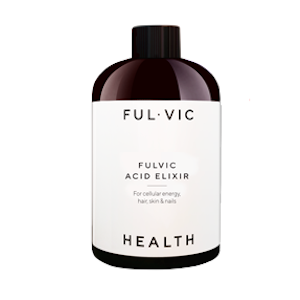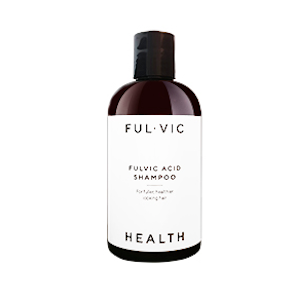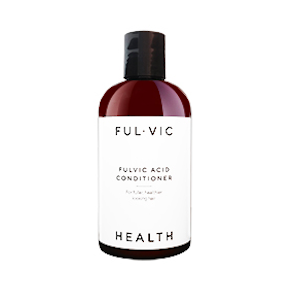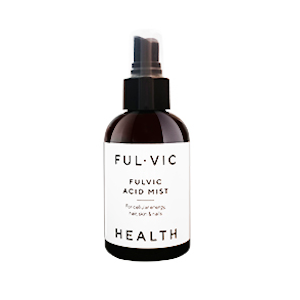
A few weeks ago we discussed dry brushing and touched a little on the lymphatic system. I wanted to delve deeper into this subject matter...
What is the Lymphatic System?
The Lymphatic System is a network of blood vessels, nodes and organs which are central to the body’s ability to identify disease causing germs and then destroying them. It works with the blood circulatory system; once blood has delivered oxygen and nutrients to the cells, 90% of it goes back into the circulatory system to be reoxygenated. However 10% of the fluid stays behind and this is called the tissue fluid. Some of the tissue fluid goes back into the bloodstream and the rest is emptied into lymph vessels and is called lymph which is a clear, colourless fluid.
Cells carry out metabolism and regeneration and this creates wastes and toxins – it is the tissue fluid that surrounds each and every cell that takes these toxins and then empties it as lymph into the lymphatic vessels.
The lymph then empties into lymph vessels which in turn pass through lymph nodes – these are tiny organs which act as filters removing compounds that are foreign to the body.
After the lymph nodes have performed their function, the lymph is carried through until it reaches the neck region where it empties into the blood system.
Summary:
The lymphatic system is like the body’s drainage system working to keep fluids in a balanced state within the body. When it does not function correctly, oedema is usually the first sign.
The lymph nodes filter out toxins and infection causing bacteria before the lymph is returned to the bloodstream. Without these nodes, infection causing bacteria would be allowed to circulate freely within the body and its tissues. Lymphocytes in the lymph system destroy the infection causing bacteria.
Although the circulatory and lymphatic system work together, they have different roles to play with the circulatory system generally nourishing whilst the lymphatic system generally detoxifying the body.
Facts:
The lymphatic system does not have a central pump like the heart – it works because of muscle movement. It has to deal with 3 times the fluid found in the circulatory system and it has to do that without the pumping mechanism and work against gravity. There is an average of between 1 and 2 litres of lymph circulating at any given time. Think of it as waste manager and defender of the body.
How To Nurture Your Lymphatic System:
The lymphatic system is like most things in our bodies – we never generally give it a thought unless something goes wrong. Often it is swellings of the lymph nodes that occurs due to infection. Such an important cleansing system requires some support periodically by using Cleavers also known as sticky weed found in the UK.
Cleavers:
1/ Cleanses the lymphatic system of toxins helping to empty these into bloodstream
2/ Is a diuretic helping to eliminate waste and toxins from kidneys out the body
3/ Is a good blood cleanser so again very important since lymph drains into bloodstream
4/ Encourages production of white blood cells
I tend to recommend Cleavers two or three times a year just as an insurance supplement. It will ensure a healthy immune system, remove toxins from the body, keep skin looking healthy etc...
Cleavers by Viridian Nutrition (£15.55)
But what can we take for ensuring our immune system remains at its peak through the winter months?
The immune system is unlike any other system within the body with a complex interactions between several glands, lymph nodes, proteins, chemical compounds, hormones and gut bacteria. In the simplest form, specialised white blood cells which know what is foreign to the body engulf pathogens when they enter the body either through skin or the ear, nose or throat.
What actually happens when a pathogen enters the body?
When a pathogen enters the body, a specific white blood cell creates a unique protein, called an antibody, that locks onto the bacteria or virus. Then the killer white cells, called T lymphocytes, perform their role to eradicate the threat and they also signal other glands involved in the immune system to assist such as the lymphatic system.
Factors which compromise the immune system:
Dehydration - You would not believe this one would you! Our body primarily works in a water filled environment. Every process takes place in fluids within the body and hence a lack of hydration will hinder these processes.
Sleep Disturbances – During sleep there is repair and regeneration of all the systems within the body including the immune system.
High Sugar Diets – Sugar destroys white blood cells because its metabolism results in inflammatory compounds.
Lack of Exercise – When you exercise, you increase blood supply to every organ and cell ensuring that you nourish the glands and cells.
Poor Diet – The immune system places a huge demand for vitamins and minerals – a poor diet will often compromise immunity.
Stress – Some stress is unavoidable but ongoing stress can cause the release of chemicals that suppress the white blood cells that destroy the pathogens.
Lack of Vitamin D3 – Widespread deficiency is responsible for signalling the white blood cells to attack invading organisms.
Daily Immunity is the most comprehensive supplement for helping to maintain a healthy immune system and to boost the immune system should you feel that you are going down with an infection.
It contains:
Astragalus – increases white blood cell counts
Elderberry – inhibits viral replication
Rich in vitamins B and C
Oregano – contains carvachol which is nature’s most potent antibacterial and antiviral compounds
As well as mushroom extracts, olive leaf and vitamin D3, zinc, and vitamin C all combined together to ensure a healthy working of the immune system.
Daily Immunity by Victoria Health (£26)
Acid Stomach & Acid Reflux
Between 25% and 40% of the population will suffer from symptoms of acid reflux. 20% of adults will suffer from GERD which is a severe form of acid reflux or persistent indigestion.
Symptoms:
Heartburn, bitter taste in the mouth due to regurgitation, persistent coughing, dry mouth, bloating after meals, belching, gassiness, burping or flatulence, throat irritation, hoarsiness etc...
Causes:
Contrary to popular belief, acid reflux symptoms are not often caused by excess acid and in fact these may be caused by a lack of acid. We require stomach acid to break down food so that we can extract nutrients from these. A lack of stomach acid causes improper breakdown, especially of protein rich foods, which can result in the creeping up of the contents of digestion up the oesophagus causing these acid reflux symptoms.
Improper function of the sphincter between the stomach and the oesophagus. When it does not close completely, acid can creep upwards causing the symptoms – long term can create damage to the oesophagus and scarring.
Since some of the acid has crept upwards, digestive process is altered causing other symptoms such as constipation, slow bowel movement etc.
Hiatus Hernia – This is where part of the stomach pushes into the chest through an opening called a hiatus which connects the stomach to the oesophagus. This causes stomach acid, bile and air to enter the oesophagus causing the symptoms of acid reflux.
Helicobacter Pylor – This is the most successful pathogen in human history – it has been around for 200 years or more and almost everyone has it with most of us not even realising that we have it. It is passed on by saliva so sharing utensils, drinks etc.
It resides in the lining of the stomach and for the majority, no symptoms are noticed. In some cases this infection causes inflammation leading to the erosion of the stomach lining causing peptic ulcers and this ulceration may also occur in the intestine and in the oesophagus.
Aging – As we age, we produce less stomach acid – this may be due to overuse of antacids but generally our digestive system ages with us.
Obesity – Fat deposition around the mid-riff region puts pressure on the valve and sphincter allowing the release of acid into the oesophagus.
Eating Large Meals – Puts excess pressure on the diaphragm causing acid to travel upwards
Excessive Exercise – Especially running and aerobic high impact exercises with too little rest can result in pressure on the abdominal cavity.
Conventional Treatments:
The major problem with all these lie in the fact that we still believe this to be due to high acid production when the reverse is usually the case.
Antacids – Provide temporary relief but of course the stomach self regulates and increases acid production quickly.
H2 Blockers – Work by blocking a substance that encourages acid production. They work slower than antacids but their action is longer. Not ideal because not breaking down food more efficiently especially protein rich foods can result in undigested protein and food putting pressure on the abdomen causing the symptoms of acid reflux to return.
PPI’s – The most prescribed group and in my opinion the most dangerous of acid reflux drugs, these permanently block an enzyme that tells your stomach to produce acid – side effects are too many to list and include:
-
Increases risk of bone fractures – due to malabsorption of nutrients
-
Increased risk of gut infection
-
Increased risk of ulcers – because low acid means the H Pylori can thrive and cause erosion
The crux of the matter is that all of the above and not without side effects, deplete nutrients within the body due to lowering the acid and increase the risk factors for other disease.
Shabir's 5 Step Protocol:
1/ Chew Your Food Thoroughly – We spoke about this earlier in the year – 12 to 15 times is a good guideline. Chewing tells your brain that its time to digest and this is the number one culprit for acid reflux. Chew thoroughly, put your fork down in between each bite and enjoy your food.
2/ Diet – Virtually every study carried out on acid reflux and GERD points to diet as a contributing factor. The diet should incorporate quality protein, probiotic enhancing foods such as fermented vegetables and fibre rich foods but DO NOT OVERLOAD ON FIBRE as this can sit and cause pressure leading to reflux. Reduce grains, refined sugar and refined vegetable oils. Basically a low inflammatory diet. Good foods include: yoghurt, bone broth, fermented vegetables etc...
3/ Apple Cider Vinegar – Introduce ACV because it raises stomach acid levels. It lowers the pH in your stomach (contains acetic acid) and therefore aids the proper breakdown of food. ACV has numerous other benefits which include:
-
Candida overgrowth - which often affects stomach acid production
-
Protective – rich in polyphenols which are powerful antioxidants
-
May help control cholesterol – because it contains apple pectin – a soluble fibre known to reduce circulating cholesterol.
-
Slows the digestion of starch – starch is converted into sugar – sugar destroys all proteins in the body which is why it is considered toxic when taken in excess amounts. This digestion of starch means less sugar in the bloodstream which means less likelihood of developing sugar related diseases.
Numerous topical uses from hair rinses, gargles and even direct application to warts.
Organic Apple Cider Vinegar by Higher Nature (£7.50)
4/ Use Betaine HCl – Betaine hydrochloride with pepsin is a supplement that alongside ACV works to increase the stomach acid levels. Pepsin is an enzyme normally released by the stomach which helps break down proteins in food more effectively – this is important because often people don’t eat lean meats and the improper breakdown of a high protein meal is more likely to cause acid reflux and acidic stomach sensations.
Betaine HCI with Pepsin by Lamberts Healthcare (£13.95)
5/ Use a Quality Digestive Enzymes Supplement – So the stomach has started the breakdown of food by using Betaine HCl but the food still needs to be continued to be broken which is where the Enhanced Super Digestive Enzymes come into play. A word of caution, these contain traces and only possible traces of dairy, wheat and soya so if you are highly sensitive to these then please use Vegan Digestive Enzymes which are free from these.
Enhanced Super Digestive Enzymes by Life Extension (£23.25)
Other tips:
-
Do not overeat – smaller meals allows food to be digested more efficiently and also does not put pressure on the sphincter between stomach and the oesophagus.
-
Do not drink too much water – stay hydrated but not overly hydrated again due to pressure on the stomach.
-
Reduce stressors if possible
-
Don’t eat before bed – allow three hours before bedtime
If your symptoms of acid reflux continue for more than a few weeks, please consult your GP.
Fulvic Acid
Fulvic Acid Elixir
(Ionicell contains Ioniplex for skin, hair and nails so this is the liquid version of this!)
Fulvic Acid Elixir by Ful.Vic.Health (£30)
Why the liquid version?
Liquids are rapidly absorbed into the bloodstream since the active is almost “pre-digested”.
Some people simply cannot swallow whilst others may be taking a lot of tablets and capsules which can put a burden on the digestive system.
Some people have less than optimal working digestion often due to a lack of digestive enzymes which results in bloating, constipation and other digestive concerns. For these people a liquid does not really require digestion to the degree that a tablet or capsule would so the liquid is gentle on the digestive system.
Many people have digestive concerns especially inflammatory bowel concerns such as IBS, colitis etc. In areas of the gut where there is inflammation, absorption is poor so taking a liquid form is more likely to be absorbed.
What is Fulvic Acid?
A complex molecule found in the humic layer of soil some 15 feet below the ground. It cannot be manufactured in a laboratory! It holds 65+ minerals including trace minerals. These minerals are in their ionic form so are easily absorbed into the tissues and cells.
What are the benefits of Fulvic Acid?
Linus Pauling quotes as saying that every single disease or concern has a mineral deficiency associated with it – this is true because minerals are required in every single process from enzyme creation, energy production, nerve function, heart function etc etc
Aside from delivering this minerals, fulvic acid acts as:
-
A catalyst to speed up reactions within the body from digestion through to nerve function. At normal body temperature, these reactions take place slowly and fulvic speeds this reaction.
-
Activates our digestive enzymes so we can extract nutrients from the food we eat.
-
Chelating agent to remove heavy metals – we are conscious of cleaning our bodies externally but not many people worry about internal cleansing.
-
Encourages oxygenation of all tissues which in turn helps enhance energy.
-
Iron Deficiency – One of the most prevalent mineral deficiencies in the world. Fulvic acid primes the iron into its ionic form so it can help to tackle any deficiency.
-
Antioxidant
-
Antimicrobial – It can be applied to cuts, wounds, leg ulcers, insect bites etc
-
People taking Fulvic Acid have reported greater feelings of vitality, improved energy, a stronger immune system and a higher tolerance to stress.
Fulvic Acid Hair Products
These hair products are not just aimed at thinning hair and hair loss – they work to ensure the health of the scalp and hair and so everyone can use them whether you have oily hair, dandruff prone hair or dry, damaged hair.
Fulvic Acid Shampoo by Ful.Vic.Health (£25)
-
Fulvic Acid - Nourishes the scalp follicles with 65+ minerals including trace minerals.
-
Aloe Vera Chamomile and Calendula - Work to calm down underlying inflammation which causes disturbed signals of keratin production – this inflammation (not always visible) causes hair loss and may also be responsible for dull looking hair.
-
Horsetail - Used for its silica content which is known to strengthen hair.
-
B Vitamins from Hops and Goldenseal especially biotin which is the most studied nutrient to nourish the scalp.
Fulvic Acid Conditioner by Ful.Vic.Health (£25)
-
Similar to shampoo but also contains amino acids to help healthy keratin production of which hair is made of – leave on scalp for a few minutes to allow these to work effectively. But amino acids are not just for keratin production.
-
Impart resilience and shine to hair
-
They may neutralise some of the damaging effects of tinting, colouring and bleaching
-
They may impart volume
Fulvic Acid Mist by Ful.Vic.Health (£25)
This is the hero product – it is a leave in treatment spray to be used overnight that delivers fulvic acid and its actives to the maximum degree.
-
Fulvic Acid - To deliver minerals
-
Marine Collagen - Rich in keratin producing amino acids such as proline – incidentally marine collagen is much smaller in size than bovine collagen.
-
Butchers Broom - Increases localised circulation to ensure healthy delivery of oxygen and nutrients from within.
-
Multiple Peptides – To promote growth factors and repair – this is a plus point because this product is not just aimed at hair – it can be used all over the face and body too.
DISCLAIMER
The contents of this video are not intended to replace conventional medical or dermatological treatments and advice. Any suggestions made are not intended to diagnose, treat, cure or prevent any disease, condition or symptom. If you have any personal concerns please seek the advice of a healthcare practitioner.
All the products featured on my social media channels I have purchased myself, or on occasion, have been sent to me by PR when called in.
I do not accept payments to create videos on my social channels. However, so as to make it easy for you ladies, I embed links so that you can purchase any products mentioned seamlessly.

